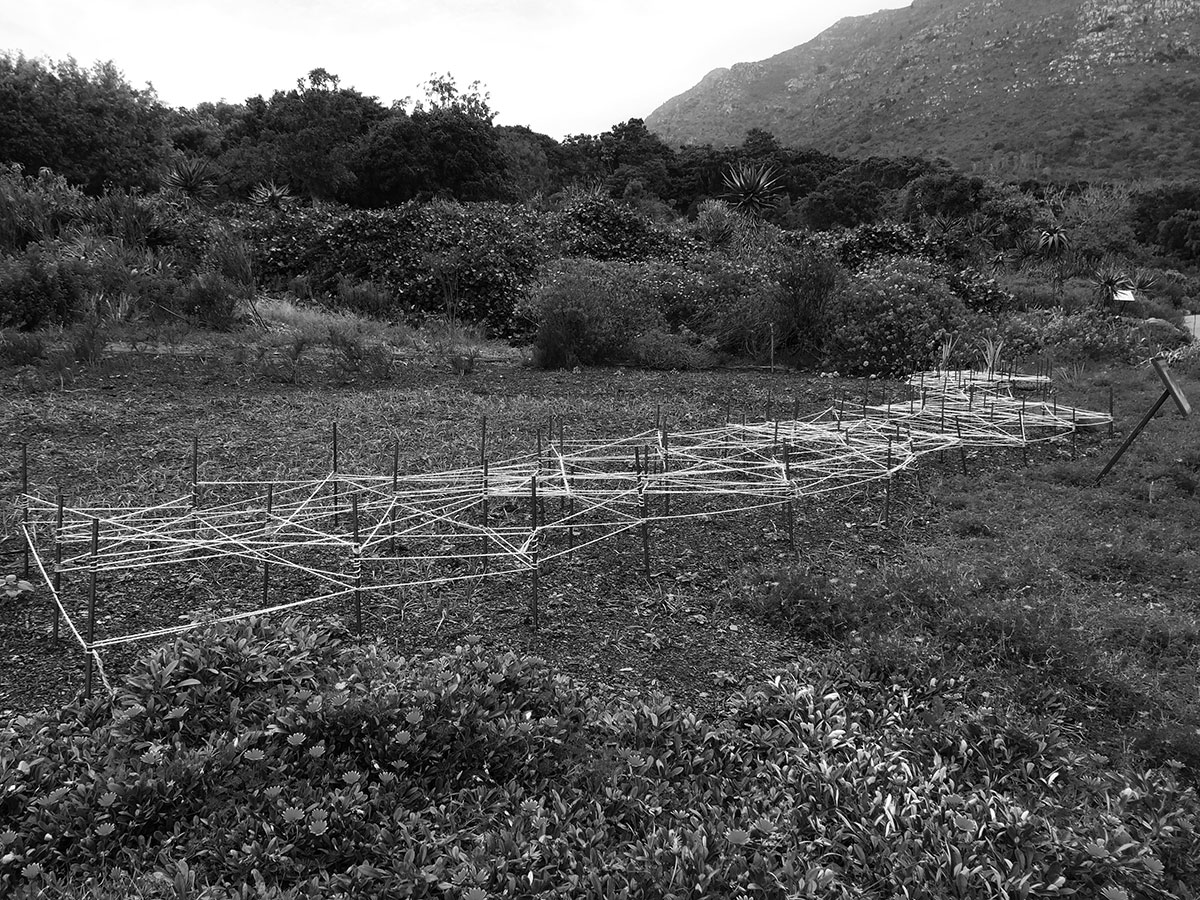Botanical entanglements
This intricate web of string, photographed in the Kirstenbosch Botanical Garden in Cape Town (South Africa) protects plants from hungry Egyptian geese. “What is the story told by this string figure?”— asks historian Melanie Boehi, a doctoral student researching the entanglements of botany, gardening, and politics in 20th-century South Africa. The photograph won Boehi a prize in the Swiss National Science Foundation’s scientific image competition.
Gardens and gardening are widely regarded as apolitical. Accordingly, garden historians have written very little about politics, while social historians have rarely taken gardens into consideration. This is true of the Kirstenbosch Botanical Garden, which was listed as a natural World Heritage Site by UNESCO in 2004 and is celebrated for its beauty and contribution to biodiversity conservation.
“However, this emphasis on natural heritage also limits the understanding of the functions of the botanical garden in the past and present,” says Boehi. In her dissertation, Boehi shows that, rather than having a uniformly positive effect on the environment and society, the garden has in fact been involved in complex processes of exercise and contestation of state power – from colonial times to the apartheid and post-apartheid eras.
Kirstenbosch was established in 1913 as a project of imperial and colonial manifestation on a piece of land from which indigenous people and descendants of slaves had previously been forcibly removed. The institution was complicit in this process, both indirectly by cultivating racist perspectives on nature conservation, and directly through its discriminatory treatment of black laborers. During apartheid, the State used pictures of plants and botanists for image campaigns at home and abroad.
“Reconsidering Kirstenbosch as a site not only of natural but also of cultural heritage, shaped by social relationships between humans and other living beings, especially plants, allows us to better understand the complex histories of the botanical garden,” says Boehi.
In this light, the function of the string figure extends beyond the merely practical: by intertwining people, wild geese, and the seedlings prized by both, it represents a multispecies history with which Boehi seeks to write plants and gardens back into historiography.
More articles in the current issue of UNI NOVA.

